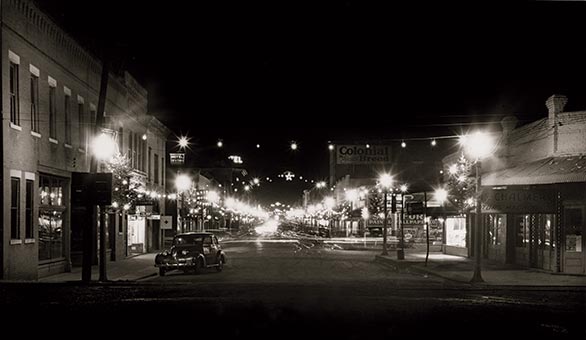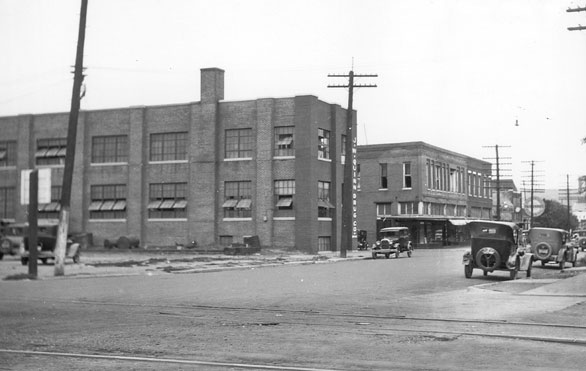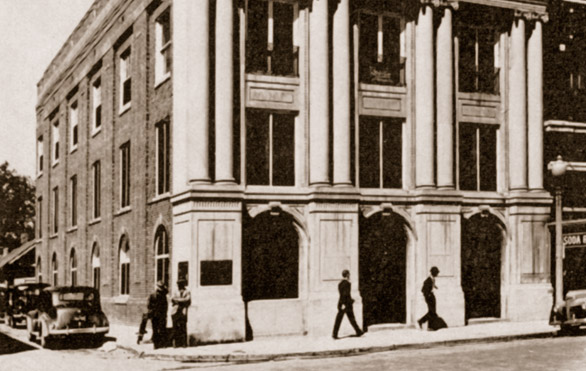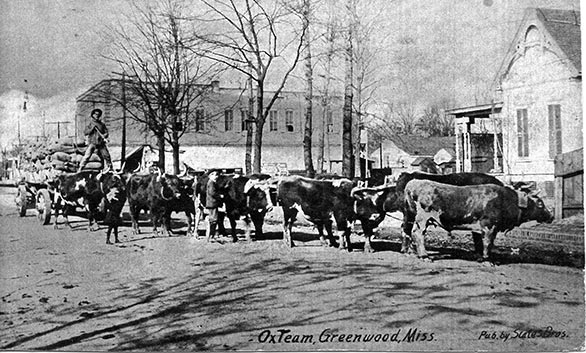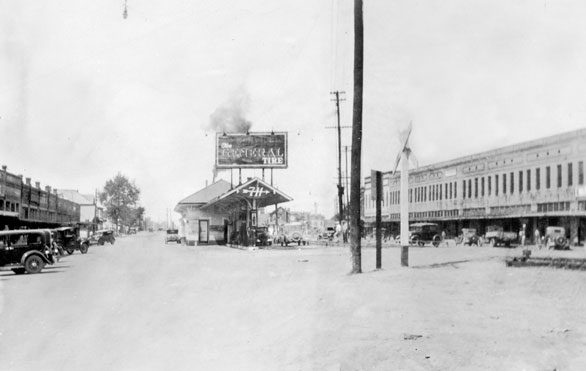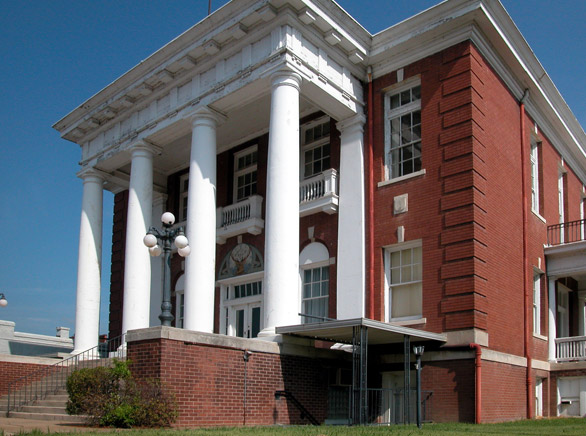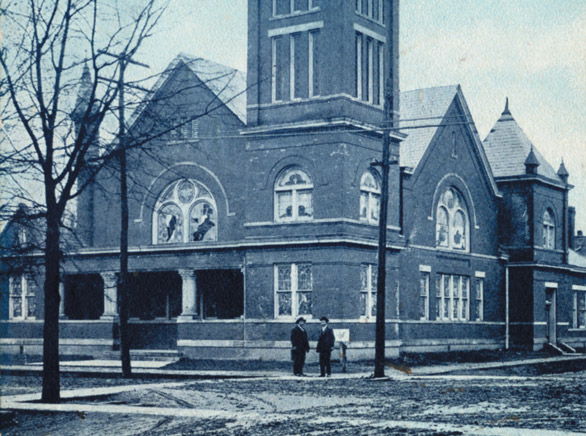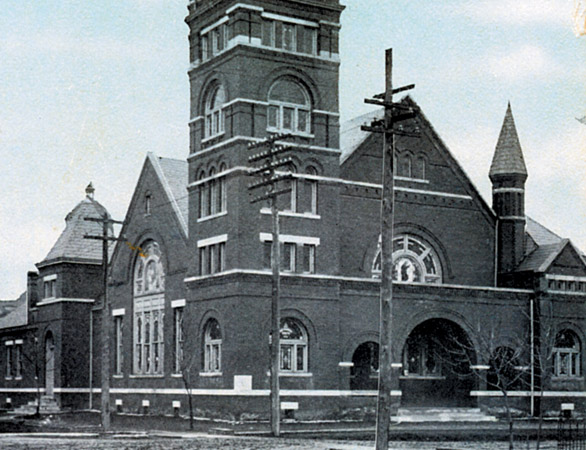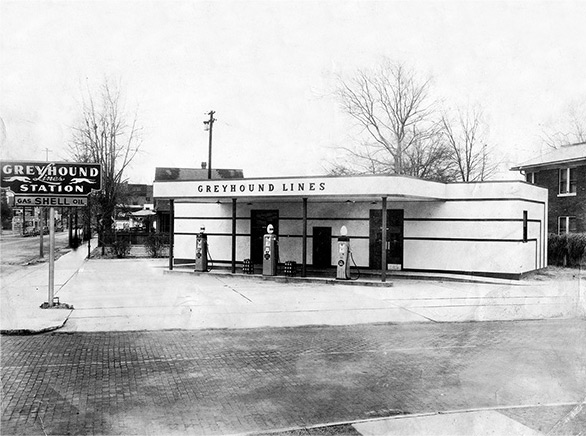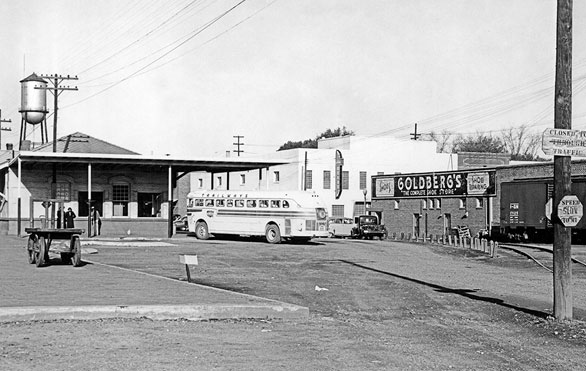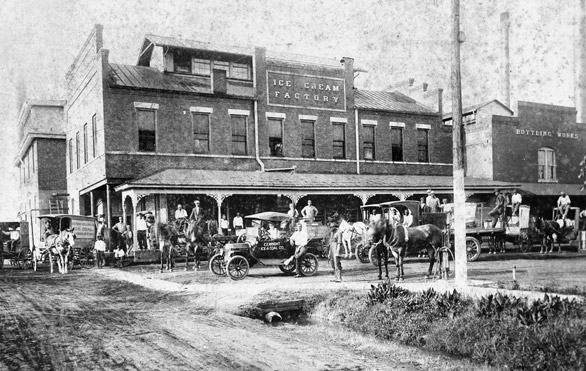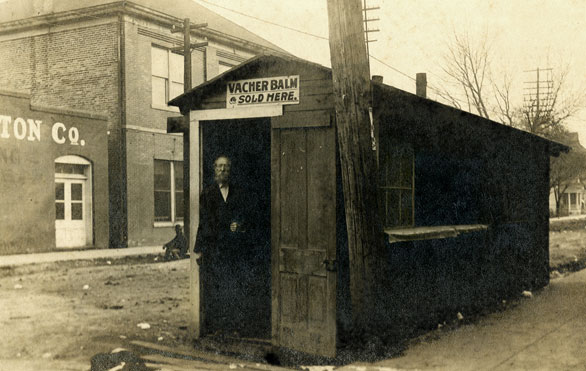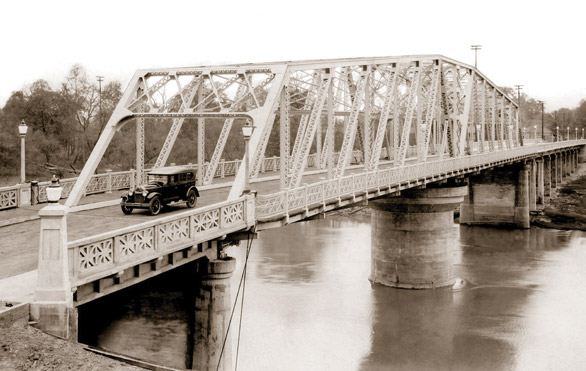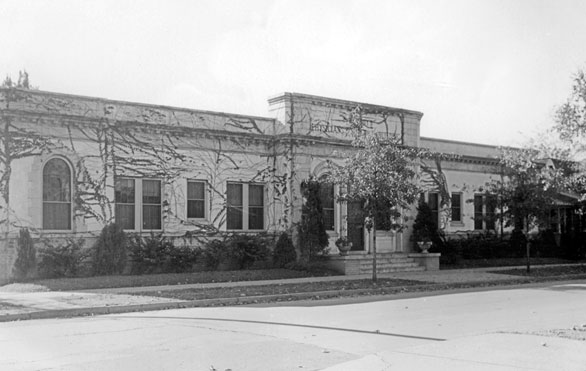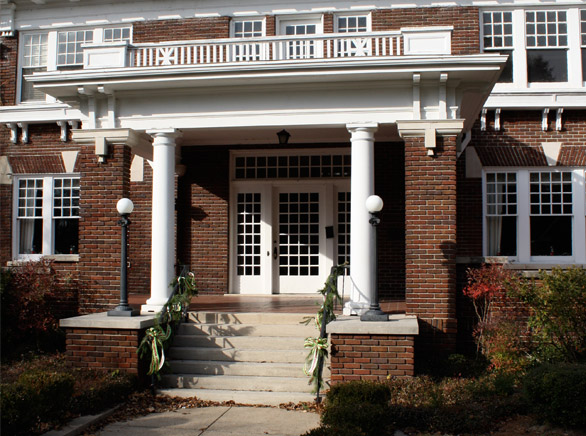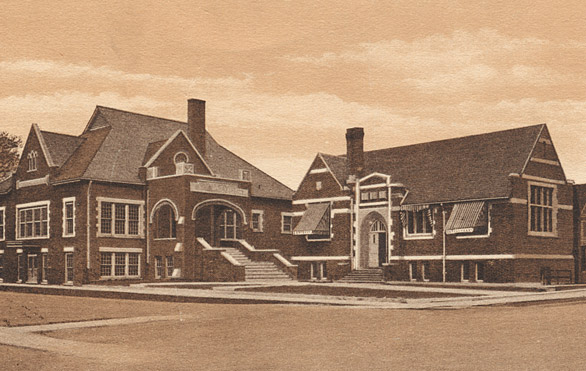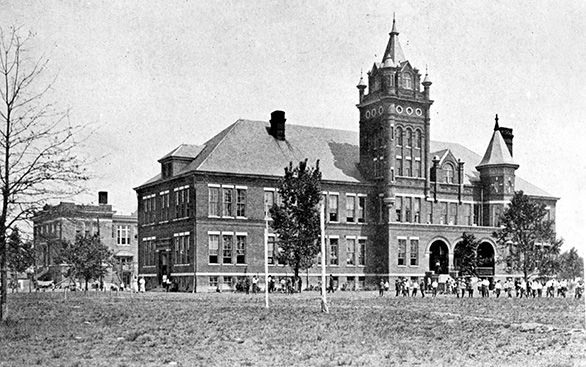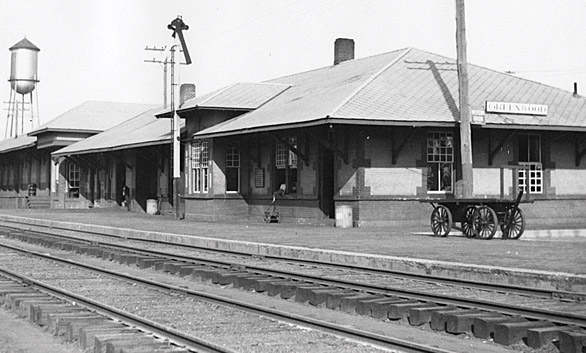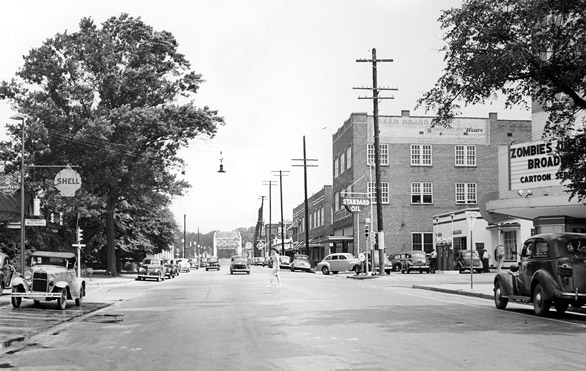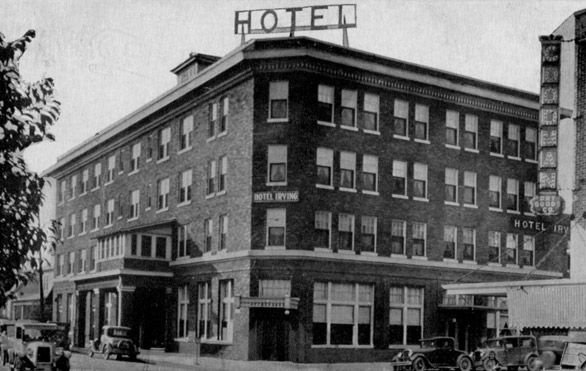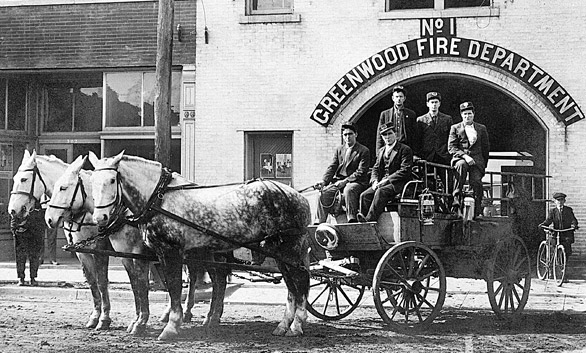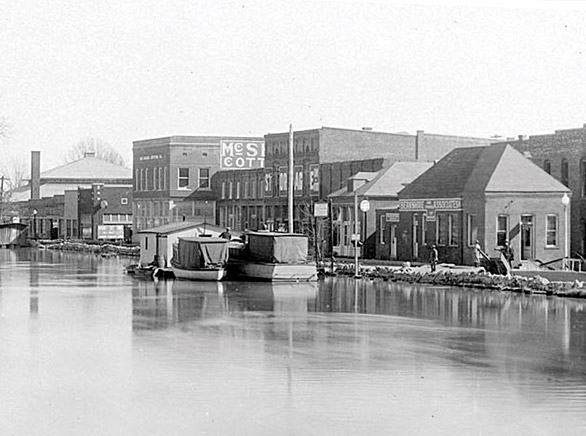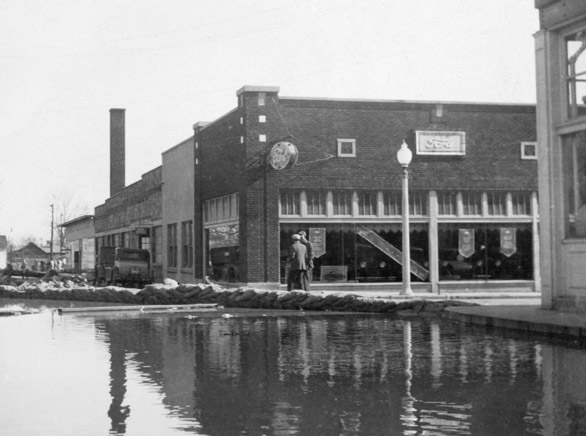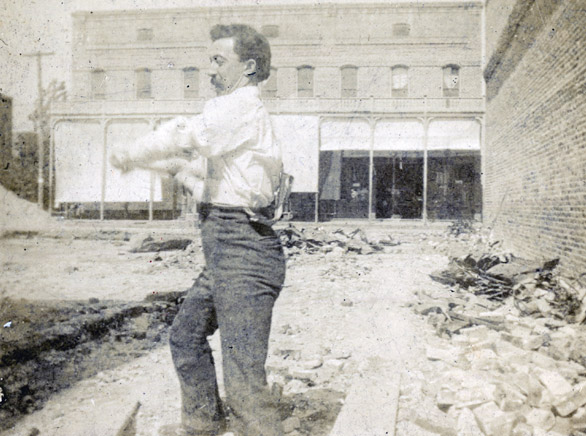 Many of the commercial buildings in this block were originally established as financial institutions and now host local merchants and retailers. The three-story structure at 222 Howard was built as a restaurant and hotel. It later housed WGRM radio, where B.B. King’s voice was first heard on the airwaves. It is now the Station 222 restaurant.
Many of the commercial buildings in this block were originally established as financial institutions and now host local merchants and retailers. The three-story structure at 222 Howard was built as a restaurant and hotel. It later housed WGRM radio, where B.B. King’s voice was first heard on the airwaves. It is now the Station 222 restaurant.
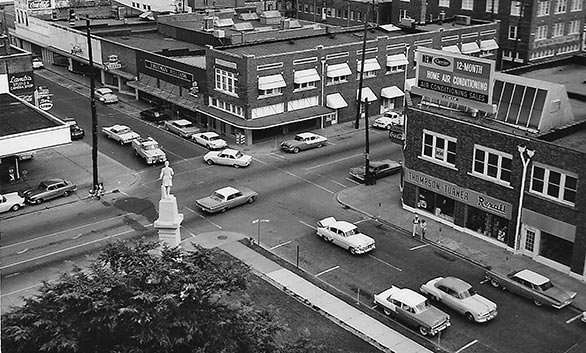 The two-story building at 207 West Market was for many years the home of the Greenwood Commonwealth, founded in 1896. This entire block dates to the late 1890s, including the Whittington Building at 229 West Market, which served as the town’s first post office. Today this block is home to DuBard Realty and JD Lanham, which has been Greenwood’s downtown appliance store since 1904.
The two-story building at 207 West Market was for many years the home of the Greenwood Commonwealth, founded in 1896. This entire block dates to the late 1890s, including the Whittington Building at 229 West Market, which served as the town’s first post office. Today this block is home to DuBard Realty and JD Lanham, which has been Greenwood’s downtown appliance store since 1904.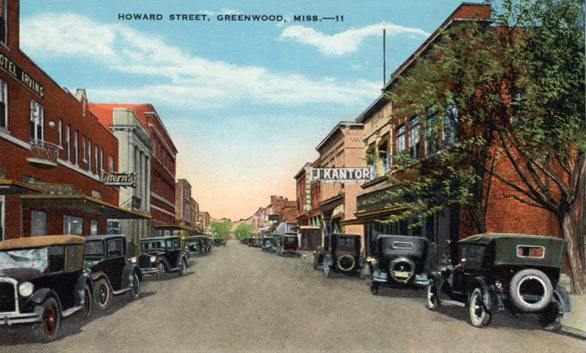 This block of commercial buildings originally featured retail space on the ground floor and offices for lawyers, dentist and doctors upstairs. Rich in masonry details, the six individual structures were completed during the years 1909 to 1920, as business development moved away from the Yazoo River and toward the C&G railroad. The old second floor offices have been converted to luxury lofts and space for the Alluvian Spa.
This block of commercial buildings originally featured retail space on the ground floor and offices for lawyers, dentist and doctors upstairs. Rich in masonry details, the six individual structures were completed during the years 1909 to 1920, as business development moved away from the Yazoo River and toward the C&G railroad. The old second floor offices have been converted to luxury lofts and space for the Alluvian Spa.
This congregation broke away from Greenwood’s Union Church in 1882. Its first church on Main Street was completed soon afterwards, and the original stained-glass windows were moved into this Gothic Revival sanctuary in 1902. The Rose Community Building was added in 1924. The 2009 south wing occupies the site of the old Rebel Theatre.
Greenwood’s oldest existing church building, this Romanesque Revival masterpiece boasts stained glass windows of leaded glass that were hand-painted and fired. The iron hitching posts around the church date back to its earliest years. In 1924, the adjacent educational building was constructed.
This congregation dates to 1901 and their building was completed not long after that date. In 1924 a bell tower was added to the exterior and in 1951 the stained-glass windows were installed. Recent renovations include a “columbarium” facing an imposing courtyard and fountain.
This landmark Howe Truss steel bridge, named for General S.R. Keesler, was the second span across the Yazoo River at this site. That first bridge’s central pier was incorporated in the 1925 design and allowed the entire superstructure and roadway to rotate 90 degrees when large boats approached. Listed as one of the state’s most endangered historic sites in 1999, it underwent a total restoration in 2002-2003.
The Leflore County Courthouse is an example of Neoclassical style. Constructed with white Alabama limestone blocks, it was expanded in 1927 and then again in 1952 by architect Robert Moor. The three-stage tower houses clock mechanisms and Westminster chimes, which sound on the quarter-hour. The Confederate Memorial, given by the local chapter of the United Daughters of the Confederacy is constructed from Italian marble and dedicated in 1913. During the 1971 Centennial time capsules were placed at the base to be opened in 2021 and 2071.
This classical structure, with Beaux Arts aspirations was commissioned by Dr. Preston Kennedy in 1926, just a few years before he was reputedly poisoned in the building by his mistress, Dr. Ruth Dean. At the trial, his deathbed statement led to her conviction. However, she was pardoned by Governor Sennett Connor.
The Confederate Memorial Building is one of only two such structures in America and was funded by the United Daughters of the Confederacy and the Greenwood Woman’s Club. The adjacent Carnegie Library was expanded in 1954 and featured WPA murals by local artist Lalla Walker Lewis.
Noted architects R.H. Hunt designed the first castle-like Davis School building, on the west side of this campus, in 1900; it was destroyed by fire in 1980. An additional structure was added in 1914 and the existing 1925 building (architects F.B. Hull and Frank McGeoy), housed Greenwood High School until 1959. A granite water fountain was dedicated in 1915 to commemorate the location of the city’s first Artesian well.
Mississippi’s largest mercantile store, Henderson-Baird Hardware, moved from Howard Street to this location in 1904. The top floor featured a skating rink that could accommodate hundreds of skaters. Staplcotn, which has operated as the first cotton cooperative in the state, moved to this location in 1931.
W.T. Fountain moved his mercantile store to the southwest corner of Howard and Washington in 1914. “Fountain’s Big Busy Store,” with 22,000 square feet of floor space, was the largest department store in the Delta until the 1950’s. Now Mississippi Gift Company, Turnrow Book Co. and The Fountain apartments occupy the original Fountain Building.
The first blocks of Main and Howard, bordered by Front Street and the Yazoo River to the North and the infamous Ramcat Alley to the South, are known as “Greenwood Cotton Row District,” which housed over 100 cotton factors in the mid-20th Century. Card games and bootleg whiskey at the Cotton Row Club fueled many business deals between cotton farmers and factors. Today, the district consists of authentically renovated buildings, which are home to Viking Range Corporate Headquarters.



